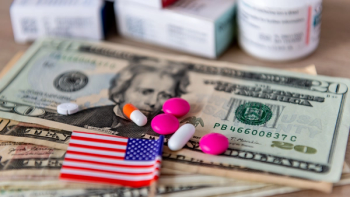
- Pharmaceutical Executive-06-01-2022
- Volume 42
- Issue 6
Are We Closer Than Ever to a Biotech Bottom?
Some observations point to hope for an upturn.
As we live through the steepest and longest bear market in biotech history, historical precedents offer little value in assessing how much lower we could fall or for how long. According to a recent biotech market update from Tim Opler and team at Torreya, over one-third of biotechs have lost 75% of their value since the market peaked in early 2021, over 200 companies are trading below enterprise value, and two-thirds of biotechs have an enterprise value below $100 million (vs. 36% in November 2021).
That said, it is likely true that we may be closer than ever to a bottom. In fact, the week of May 16 was the first up week for the sector in the seven weeks prior—shockingly, it was actually the top-performing sector.
Perhaps, this may have been ushered in part by the increasingly pervasive fears about an impending recession fed by disappointing earnings reports from leading consumer and retail companies flooded with excess inventory and facing soaring costs. Apparently, customers are trading down to cheaper private-label items and appear to be buying what they “need” vs. what they “want,” and the inventory bulge is in the products that fall into the latter category. Inventory markdown risks are running high.
Giants like Walmart and Target have seen their worst stock declines since 1987 and took a sharp ax to their forecasts. Investors fear it could get worse, as the likes of Costco, Dollar General, and Best Buy report their results.
A rapid acceleration in the economy had investors rotating out of expensive growth stocks (like biotech), while rising expectations for rates penalized long-dated assets, such as the highly risky development-stage biotechs, years away from the market, and serial capital raisers highly dependent on capital markets. With the sputtering in the economy and prevailing expectations for a recession, investors may rotate back into growth, including biotech.
Green shoots suggest optimism for biotech
While still slow and selective, a window into accessing the capital markets does appear to be opening with IPOs and follow-on offerings picking up. We are hearing that the sector specialists do believe there is opportunity in the carnage, and money appears to be coalescing with a goal of identifying and capitalizing on them. Restructurings are reducing cash burns and ring-fencing lead programs. Firepower among the large-cap biopharmas, according to a report published by EY, is at all-time highs, and M&A, partnerships, and alliances remain a key pillar of growth strategies, particularly as the industry heads into a substantial patent cliff and industry blockbusters face losses of exclusivity. New funds continue to pour into the sector earmarked for investments in the innovation renaissance underway. ATLAS is closing a $3 billion fund, Sofinnova is bringing in $1.5 billion from Apollo, along with other VCs and financial sponsors with rising interest in the sector. Flagship and many others have all raised record amounts of capital for investment in biotech.
Smart money looks to invest more in biotech
“This is not 2000, when biotech investors often bet on a one-product company, which by definition is binary. Today, savvy healthcare investors have an opportunity to buy platforms of IP, with multiple paths to value creation, some of which have the potential to provide cures,” says Meghan Fitzgerald, a private equity investor who is also a founder in K2Healthcare Ventures and an active life sciences fund investor. “For those with the right teams to assess the science, it’s a compelling time to roll up assets trading at or below cash.”
Interest in reverse mergers is also growing, which have the potential to create new companies with better funding and broader pipelines. Reverse mergers could consolidate the public biotech space. According to select equity capital market desks, dialogues with prominent funds in the sector are calling for a bottom. Let’s hope they are right.
Barbara Ryan is Founder, Barbara Ryan Advisors, and a member of Pharm Exec’s Editorial Advisory Board.
Articles in this issue
over 3 years ago
Pharmaceutical Executive, June 2022 Issue (PDF)over 3 years ago
2022 Pharm Exec Top 50 Companiesover 3 years ago
The Emergence of the Chief Value Officer in Healthcareover 3 years ago
Sustainability Sea Change: The Top 5 ESG Challenges for Pharmaover 3 years ago
Is the C-Suite Getting Inflated?over 3 years ago
Clinical Composerover 3 years ago
DE&I in Pharma: Good for People—and Businessover 3 years ago
Early Input Necessary in Creating Smooth C-Suite Transitionsover 3 years ago
A Storm in a Brussels Teacup Could Threaten Drug-Pricing Watersover 3 years ago
Fresh Talent Awaits, But Must Be Tech-SavvyNewsletter
Lead with insight with the Pharmaceutical Executive newsletter, featuring strategic analysis, leadership trends, and market intelligence for biopharma decision-makers.




